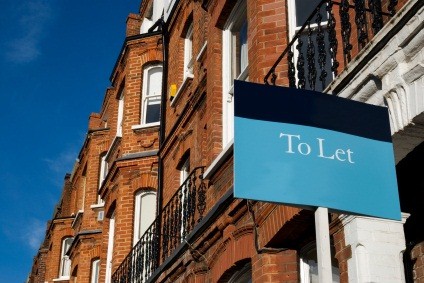
Investing in the buy-to-let market can be a lucrative endeavor, but it’s crucial to approach it with careful planning and informed decision-making. This comprehensive guide will provide you with valuable insights and practical tips to ensure your success as a buy-to-let property investor. From understanding the market dynamics to managing tenants and maximizing rental income, this article covers all aspects you should consider before making your investment.
Read This Before You Buy-To-Let
Investing in property can be an exciting and profitable venture. However, it’s essential to be well-prepared and well-informed before taking the leap. In this section, we’ll explore the key factors you need to consider before you buy-to-let.
Understanding the Buy-to-Let Market
To make informed investment decisions, it’s crucial to understand the buy-to-let market landscape. Let’s explore some key aspects:
- Market Trends and Forecasts: Stay updated with market trends, such as rental demand, property prices, and investment hotspots, to identify opportunities and make informed decisions.
- Location Analysis: Research different areas to determine their suitability for buy-to-let investments. Factors to consider include rental yields, local amenities, transport links, and potential for capital growth.
- Mortgage Options: Familiarize yourself with various buy-to-let mortgage options available, including interest rates, eligibility criteria, and repayment terms.
- Legal and Regulatory Requirements: Understand the legal and regulatory obligations associated with being a landlord, such as safety regulations, tenancy agreements, and tax implications.
Assessing Investment Potential
Before investing in a buy-to-let property, it’s crucial to assess its potential returns and viability. Consider the following:
- Rental Yield Calculation: Calculate the rental yield by dividing the annual rental income by the property’s purchase price. Aim for a rental yield that exceeds your costs and generates a positive cash flow.
- Capital Appreciation: Research the potential for capital appreciation in the area you’re considering. Areas with high demand and limited supply often experience significant capital growth.
- Costs and Expenses: Determine the costs involved in property acquisition, such as stamp duty, legal fees, and refurbishment expenses. Additionally, consider ongoing expenses like property management fees, insurance, and maintenance costs.
- Return on Investment (ROI): Calculate the return on investment by considering both rental income and capital appreciation. This will help you evaluate the long-term profitability of the investment.
Financing Your Investment
Finding suitable financing options is a crucial step in your buy-to-let journey. Explore the following financing considerations:
- Buy-to-Let Mortgages: Research different buy-to-let mortgage products and compare interest rates, fees, and loan-to-value ratios. Consult with a mortgage advisor to identify the most suitable option for your investment.
- Deposit Requirements: Determine the deposit amount required for your buy-to-let property purchase. Generally, a larger deposit will result in more favorable mortgage terms.
- Affordability Assessment: Understand the affordability criteria lenders consider, including rental income requirements and your personal financial situation. Ensure you can comfortably cover mortgage payments even during void periods.
Property Selection and Management
Choosing the right property and effectively managing it are crucial for success in the buy-to-let market. Consider the following factors:
- Property Type and Location: Assess different property types, such as apartments, houses, or HMOs (houses in multiple occupation). Additionally, research locations that offer good rental demand, potential for growth, and desirable amenities.
- Tenant Profile: Identify your target tenant profile, such as young professionals, families, or students. Tailor your property selection and management approach accordingly to attract and retain suitable tenants.
- Property Maintenance: Ensure the property is well-maintained to attract tenants and preserve its value. Regular inspections, prompt repairs, and responsive communication with tenants are essential for effective property management.
- Tenant Screening: Develop a robust tenant screening process to minimize the risk of unreliable tenants. Perform thorough background checks, including credit history, references, and employment verification.
Maximizing Rental Income
Maximizing your rental income is key to optimizing your buy-to-let investment. Consider the following strategies:
- Market Research: Stay informed about rental rates in your target area. Conduct regular market research to ensure your rental income remains competitive and in line with the market.
- Property Upgrades: Consider making strategic property upgrades to attract higher-paying tenants. Focus on improvements that offer a good return on investment, such as modernizing kitchens or adding additional bathrooms.
- Long-Term Tenancies: Encourage long-term tenancies by offering favorable rental terms and maintaining a positive landlord-tenant relationship. Long-term tenants reduce void periods and turnover costs.
- Rental Insurance: Protect your rental income and property by securing suitable landlord insurance. This provides coverage for potential risks such as damage, loss of rent, and liability claims.
FAQs (Frequently Asked Questions)
Q: Can anyone invest in a buy-to-let property?
A: Yes, anyone can invest in a buy-to-let property, provided they have the necessary funds for the deposit and meet the mortgage lender’s criteria.
Q: How do I find suitable tenants for my buy-to-let property?
A: Finding suitable tenants involves advertising the property effectively, conducting thorough tenant screening, and maintaining good communication and relationships with prospective tenants.
Q: What are the tax implications of buy-to-let investments?
A: Buy-to-let investments are subject to various tax considerations, such as income tax on rental income, capital gains tax on property sales, and potential stamp duty surcharges. Consult with a tax professional for personalized advice.
Q: What should I do if my tenant fails to pay rent on time?
A: If your tenant fails to pay rent on time, communicate with them promptly to understand the situation. If necessary, follow the legal procedures for rent arrears and seek professional advice if the issue persists.
Q: Is property management necessary for buy-to-let investments?
A: Property management is not mandatory, but it can be highly beneficial. Property management companies handle day-to-day tasks, tenant management, and property maintenance, saving you time and effort.
Q: How can I handle property maintenance efficiently?
A: Regular property inspections, prompt repairs, and responsive communication with tenants are essential for efficient property maintenance. Consider engaging reliable contractors and staying proactive in addressing maintenance issues.
Conclusion
Investing in buy-to-let properties offers a fantastic opportunity to generate passive income and build long-term wealth. By considering the factors outlined in this comprehensive guide, understanding the market dynamics, and implementing effective management strategies, you can increase your chances of success in the competitive property investment landscape.
Remember, thorough research, careful planning, and ongoing evaluation are essential for staying ahead in the buy-to-let market. So, take the time to read this guide carefully, seek professional advice when needed, and embark on your buy-to-let journey with confidence.




